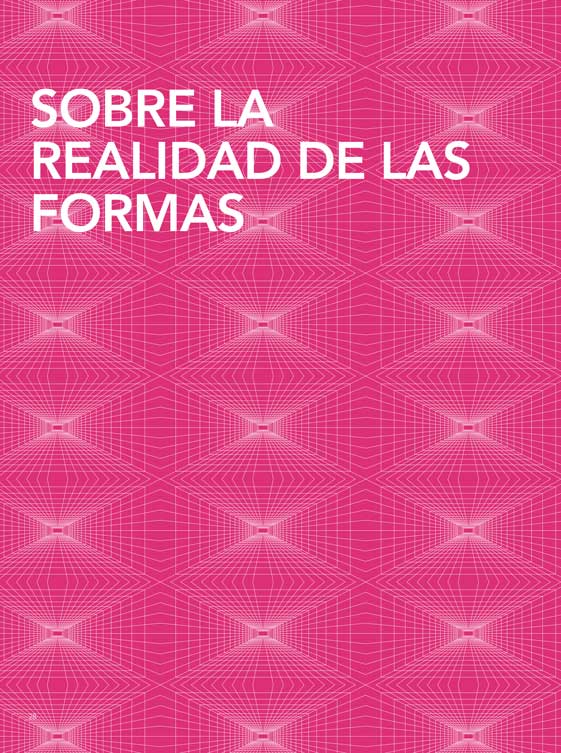Sobre la realidad de las formas
Article Sidebar

Keywords:
Main Article Content
Abstract
El ensayo analiza algunas de las técnicas que Josef Albers, el famoso artista-educador, usaba en su propio trabajo y en sus clases para hacer que la forma activara la mente del creador. El concepto de “real,” que Albers usaba para hacer una distinción entre dos tipos de conocimiento, “hechos factuales” (pasivos) y “hechos reales” (activos), era usado para describir formas que provocaban la innovación. El ensayo plantea que Albers no buscaba lo excepcional, sino que prefería formas comunes, incluso banales, que tuvieran alguna semejanza con las cosas que la gente encontraba en la vida diaria. Algunas de las famosas tareas que daba en sus clases de color y dibujo a mano alzada, como también sus series “Homenaje al cuadrado”, se discuten como ejemplos de la manera en que se proponía despegar a sus alumnos y a sí mismo del vínculo entre forma y significado, abriendo la forma a una multiplicidad de experiencias e interpretaciones. Concluyendo, el ensayo sitúa las ideas de Albers sobre las maneras de hacer y experimentar el arte dentro de la cultura intelectual de los siglos XIX y XX y especula sobre su relevancia para la arquitectura de hoy. Las principales referencias incluyen el libro de Federick A. Horowitz y Brenda Danilowitz Josef Albers: To Open Eyes y artículos de Josef y Anni Albers.
Article Details
Materia Arquitectura provides immediate and free access to all the content of this online edition, published simultaneously with the print edition.
Materia Arquitectura does not charge authors for any concept.
All contents of this electronic edition are distributed under the Creative Commons license of "Attribución-shareAlike 4.0 Internacional" (CC-BY-SA).
The rights of the published texts and images belong to their authors, who grant Materia Arquitectura the license for their use. The management of the permits and the authorization of the publication of the images (or of any material) that contains copyright and its consequent rights of reproduction in this publication is the sole responsibility of the authors of the articles.
As long as they mention their origin, the authors are free to distribute their articles by other means. Any total or partial reproduction of the material must mention its origin.
Downloads
References
ALBERS, J. (1934). Concerning Art Instruction. Black Mountain College Bulletin 2.
ALBERS, J. (1969). One Plus One Equals Three and More: Factual Facts and Actual Facts. En J. Albers, Search versus re-search: three lectures by Josef Albers at Trinity College, April 1965. Hartford, EE.UU.: Trinity College Press.
ALBERS, J. (2013). Interaction of Color. 50th anniversary edition. New Haven, EE.UU.: Yale University Press.
HOROWITZ, F. A., & DANILOWITZ, B. (2006). Josef Albers: To Open Eyes. Londres: Phaidon.
MERTINS, D. (2004). Bioconstructivism. En L. Spuybroek (Ed.), NOX: Machining Architecture (págs. 360-369). Londres: Thames & Hudson.
PELKONEN, E. L. (2012). Toward Cognitive Architecture. En S. von Moos, & J. Eisenbrandt (Eds.), Louis Kahn: The Power of Architecture (págs. 133-148). Weil-am-Rhein: Vitra Design Museum.
WINCKELMANN, J. J. (1765). Reflections on the Painting and Sculpture of the Greeks. Londres: A. Millar on the Strand.
Most read articles by the same author(s)
- Eeva-Liisa Pelkonen, On the Actuality of Forms , Materia Arquitectura: No. 09 (2014): Materia Arquitectura 09 (Agosto/August 2014)